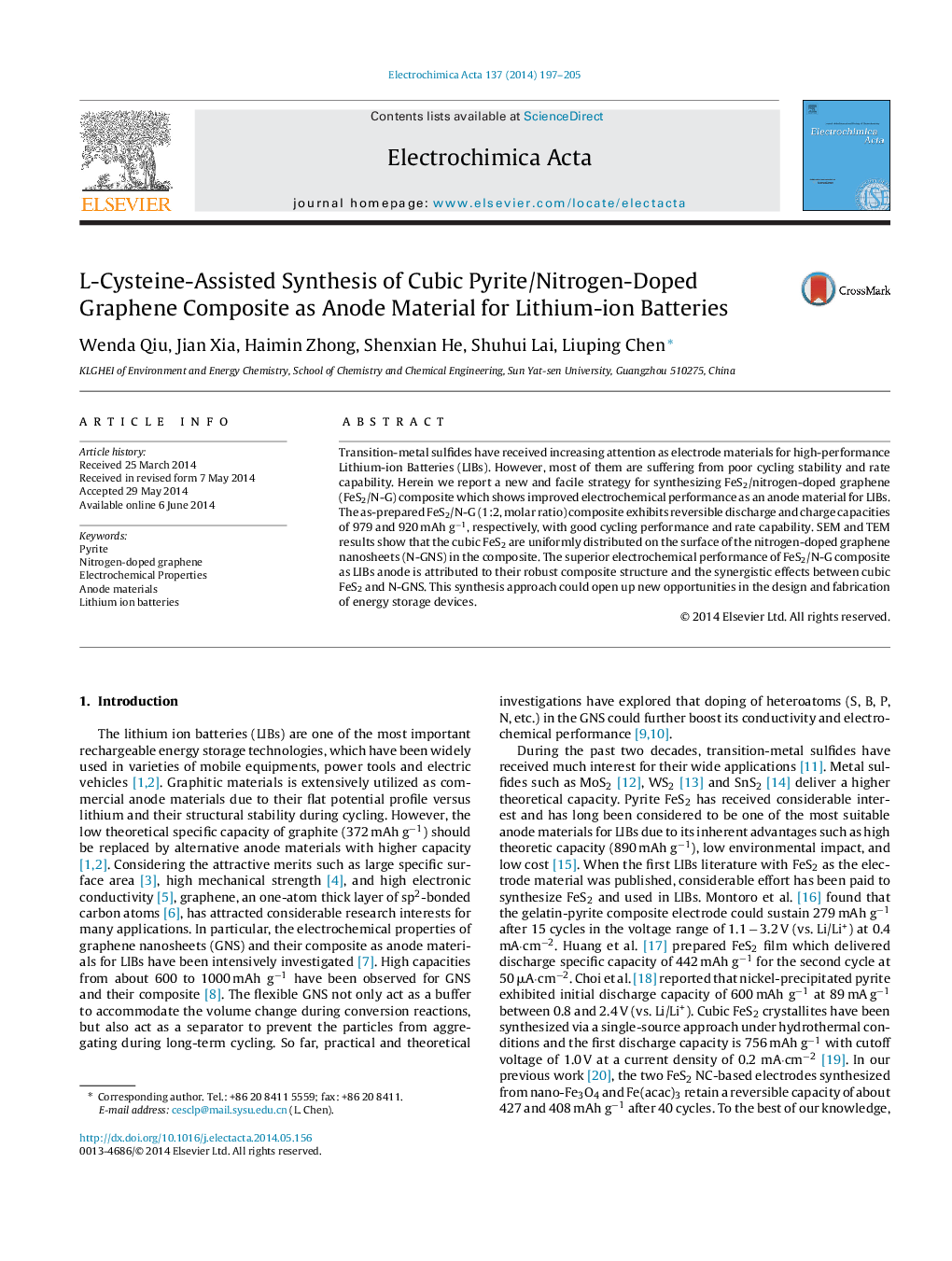| Article ID | Journal | Published Year | Pages | File Type |
|---|---|---|---|---|
| 185564 | Electrochimica Acta | 2014 | 9 Pages |
•We have demonstrated a new and general strategy to synthesize FeS2/nitrogen-doped graphene composite by an L-cysteine-assisted solution-phase method.•Cubic FeS2 particles are uniformly distributed on the surface of nitrogen-doped graphene nanosheets.•Nitrogen-doped graphene nanosheets can not only prevent the cubic FeS2 particles from aggregating, but also accommodate the volume change of cubic FeS2 particles during cycling.•We have demonstrated that electrochemical performance of cubic FeS2 particles significantly improve with nitrogen-doped graphene.
Transition-metal sulfides have received increasing attention as electrode materials for high-performance Lithium-ion Batteries (LIBs). However, most of them are suffering from poor cycling stability and rate capability. Herein we report a new and facile strategy for synthesizing FeS2/nitrogen-doped graphene (FeS2/N-G) composite which shows improved electrochemical performance as an anode material for LIBs. The as-prepared FeS2/N-G (1:2, molar ratio) composite exhibits reversible discharge and charge capacities of 979 and 920 mAh g−1, respectively, with good cycling performance and rate capability. SEM and TEM results show that the cubic FeS2 are uniformly distributed on the surface of the nitrogen-doped graphene nanosheets (N-GNS) in the composite. The superior electrochemical performance of FeS2/N-G composite as LIBs anode is attributed to their robust composite structure and the synergistic effects between cubic FeS2 and N-GNS. This synthesis approach could open up new opportunities in the design and fabrication of energy storage devices.
Graphical abstractFigure optionsDownload full-size imageDownload as PowerPoint slide
